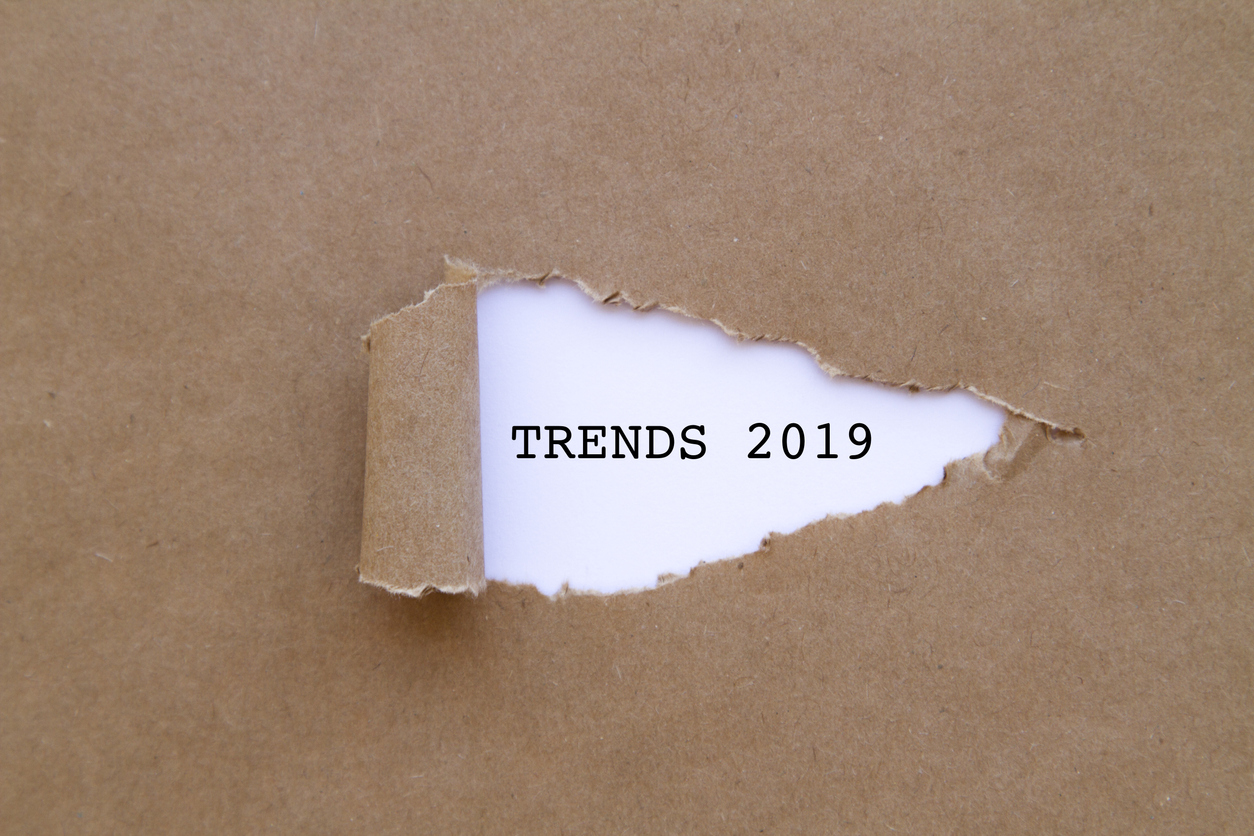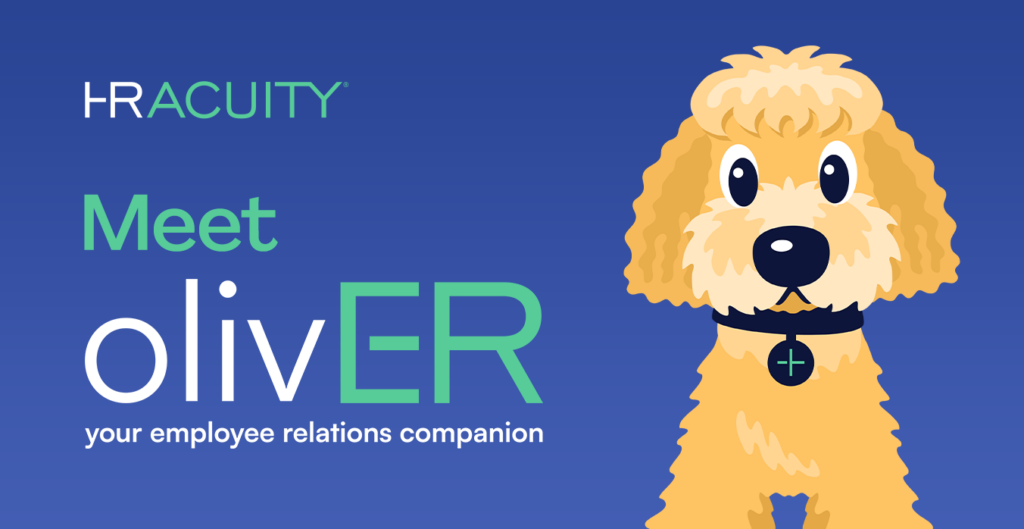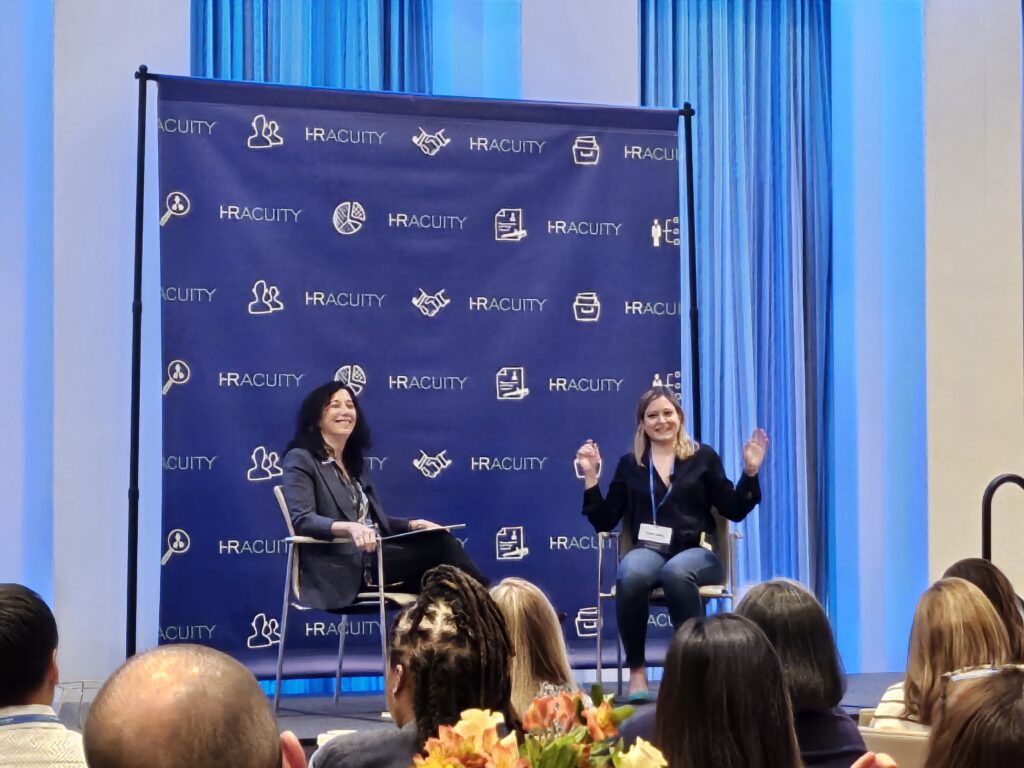The first quarter is already over, and spring is in the air. So what are the hot trends in HR so far this year, especially as they relate to Employee Relations? We’ve noticed five emerging HR trends that are top of mind for leaders this year. See how they are transforming organizations and their processes for the better in 2019.
1. The Promise (and Challenges) of AI
Is there any bigger buzzword than artificial intelligence, especially as it relates to HR and employee relations?
This is probably dating me, but it reminds me of a parody video with Bill Gates in the 90s, advising anyone who wanted guaranteed VC funding to use one word in their proposal: INTERNET! Today, AI is at the same point: maximum hype. It clearly holds real promise, but it’s sometimes hard to see through the hyperbole.
So are we actually taking advantage of the promise of AI yet across employee relations?
The answer seems mixed. According to our recent HR Acuity Tech & Metrics study, 69% answered a resounding “no” when asked if they had plans to use AI or predictive analytics with their employee relations data. Asked why, respondents pointed to these issues:
- Data quality is still poor. As always, analytics and AI are only as good as the data they’re based on — and for many of us, that foundation remains a major work in progress. Managing data across geographic and functional silos, filling in data gaps, collecting and tracking it consistently — the basis for AI is not yet there in many cases.
- Some are starting to look at incorporating AI, but have not yet developed processes or plans around it. “It’s on the roadmap,” wrote one ER leader. “We are taking a phased approach starting with our foundational systems to track case activity and understand the descriptive statistics that describe the trends… the next step will be to integrate with other sources and apply machine learning technology to predict employee behavior.”
- Some are further in the process and have hired dedicated HR analytics/data science teams to look at metrics from all areas of HR, helping ER/HR become proactive instead of reactive.
Overall, success in AI starts with a vision and the questions to be answered — what do you want to achieve with your data? It’s not just AI for AI’s sake. Gartner’s data maturity model and vision has helpful advice for those looking for guidance.
Some specific HR AI use cases are already showing results. On the talent side, for example, recruiters are using artificial intelligence tools to help with interviewing and candidate selection and are finding that these tools have significantly reduced the time to hire and increased productivity for recruiters. This isn’t without controversy. A recent NYU study covered in HCM Technologist pointed to potential discrimination and bias reflected in the algorithms, and the implications on how far to take predictive and prescriptive analytics for hiring open all new vistas of debate.
The rise of chatbots is another example: some organizations are implementing bots to help answer HR questions ranging from company holidays to benefits policies. There’s debate over on how far this can go — can a bot handle an investigation as well as a person, for example? — which will be interesting to watch. Of course, our point of view is nothing replaces the human touch when it comes to sensitive matters like investigations, but only time will tell.
In any case, it’s clear that organizations who embrace data and analytics now will be prepared to implement AI for improved performance down the road. Here at HR Acuity, it’s one of the biggest areas we are looking at, based on feedback from our clients. We are continuing to evaluate and test how AI and machine learning can augment the investigation process, power analytics and add value for users of our solution.
2. #MeToo is Still a Challenge
More than a year and half in, #MeToo is still making headlines. Unfortunately, up until the day when artificial intelligence completely takes over and humans no longer work, problems with sexual harassment in the workplace will remain. No one is expecting it to go away completely, but the good news is that companies are taking action to prevent it. By the end of this year, 72 percent of employees will have received training in sexual harassment. That’s a start.
But, even as companies address harassment, the nuances of what is or isn’t appropriate keeps driving the conversation. What started with egregious cases out of Hollywood now has people questioning former Vice President and current Presidential Candidate Joe Biden’s habit of being, what we used to call, “touchy-feely.”
What can we can all agree on: HR is unlikely to run out of work educating and coaching people on proper work behavior anytime soon. Today, the focus is expanding beyond individual training and accountability to implementing widespread cultural change to prevent harassment on an organizational scale.
From creating zero-tolerance cultures (which, as one of our clients recently pointed out, doesn’t necessarily mean termination but that all claims are investigated, documented and taken seriously) to a commitment to organizational transparency to certifications from the top down, HR and ER teams are leading the charge.
The end goal is to build fair, safe workplaces where team members feel comfortable coming forward and all involved know a consistent protocol will be followed.
Not sure where to start? Ally Coll, President & Co-Founder of the non-profit the Purple Campaign, joined HR Acuity CEO Deb Muller for a live webinar discussion on recommendations your company can take to prevent harassment in your organization post #MeToo. You can access the recording of the webinar here.
3. Addressing Workplace Misconduct with Transparency
An ongoing trend in HR is the increased focus on buttoning up process and documentation around everyday misconduct and incidents — and treating all involved with transparency.
Today’s HR and ER leaders are increasingly on alert to all issues, not just high profile ones, because seemingly small ones add up, leading to the ability to uncover inconsistent practices, poor work environment or toxic leaders.
The “how” you deal with the issues is as important as the issue itself. Employees and managers both expect transparency, and reporting into a black hole makes no one feel like they work in a safe workplace. As one prominent example, Google demonstrated a huge step forward last week when they published an update on their workplace commitments.
So how to create a culture of transparency and integrity? It starts with consistent process, tracking and documentation. Read what happens when managers don’t document conversations — then get guidance here on the the 10 key metrics all HR leaders should track for help.
4. Managing Marijuana in the Workplace
Ten years ago, drug-free policies were simple. Today, they aren’t, especially if you run a multi-state business. If recreational marijuana is legal in your state, do you test for it? If it’s not, but an employee tests positive but says he used it across the border, then what?
Currently, marijuana is illegal under federal law, and so regardless of state permissiveness, the feds could crack down on anyone. But, Attorney General William Barr says he wants the feds to get involved. This would make it easier for HR managers to make multi-state policies, but what the federal government comes up with may not be what individual states want.
Many businesses don’t bother testing for any drug use now after the initial hire, and that number is likely to climb. Keep an eye out. If there aren’t safety reasons involved, you may want to know if your competitor still tests. And how will the marijuana debate unfold? Stay tuned.
5. The Importance of Mental Health
Mental health awareness is on the rise and the stigma is lessening rapidly — welcome news for all. It used to be ignored in the workplace, while now Prince Harry and Oprah are teaming up to talk about it. And, employers are learning that mental health issues–especially ones left untreated–can cost thousands in additional health care costs each year. Those costs are not just for the eventual mental health care that is needed, but for physical problems that can happen or worsen if someone is suffering from a mental illness.
In HR and employee relations, the push is on to train both HR teams and the organization at large to recognize signs of depression, substance abuse and concerning behaviors, while empowering employees to use available resources without stigma. Crisis management is also a hot topic among HR leaders. Finally, organizations are considering their support options, expanding beyond traditional EAPS and partnering with newer generation providers dedicated to mental health, such as Spring Health.
As we all work daily to help our organizations protect our reputations, our teams and build better workplaces, I’m curious to know what’s on your minds. Do these trends resonate with you? What’s top of mind for you as an Employee Relations and HR leader? I look forward to hearing your thoughts. Feel free to email me directly at dmuller@hracuity.com.




